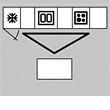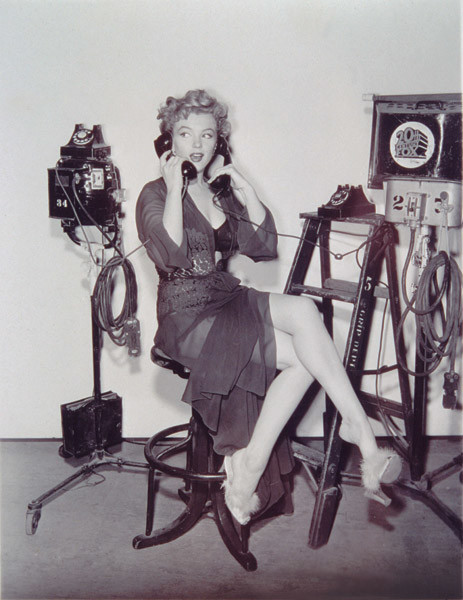 History of the telephoneWith the invention of the telephone camethe same as with the invention of the electric light bulb or the typewriter. The same idea almost simultaneously struck the heads of several worthy gentlemen - the Americans Alexander Bell and Elisha Gray, the Englishman Charles Wheatstone, the Swiss Charles Bursel, the German Johann Reiss... However, only Bell went down in history. On February 14, 1876, he, just two hours ahead of his competitor Elisha Gray, was the first to patent a "musical telegraph", which transmitted the human voice over long distances using an electrical impulse. By the way, the first telephone conversation took place much earlier: on March 10, 1875. Sitting in the attic, Bell said to his assistant, who was in the office: "Mr. Watson, I want to see you", " and was heard! The first telephone station was already in operation in January 1878. It connected twenty-one subscribers in the city of New Haven.
History of the telephoneWith the invention of the telephone camethe same as with the invention of the electric light bulb or the typewriter. The same idea almost simultaneously struck the heads of several worthy gentlemen - the Americans Alexander Bell and Elisha Gray, the Englishman Charles Wheatstone, the Swiss Charles Bursel, the German Johann Reiss... However, only Bell went down in history. On February 14, 1876, he, just two hours ahead of his competitor Elisha Gray, was the first to patent a "musical telegraph", which transmitted the human voice over long distances using an electrical impulse. By the way, the first telephone conversation took place much earlier: on March 10, 1875. Sitting in the attic, Bell said to his assistant, who was in the office: "Mr. Watson, I want to see you", " and was heard! The first telephone station was already in operation in January 1878. It connected twenty-one subscribers in the city of New Haven.
«Hello, young lady!»

 The first "telephone operators" were not at allyoung ladies, and boys. But the work, which required perseverance and considerable patience, was not to the teenagers' taste. They played, hooliganized and damaged equipment. In 1878, the Boston Telephone Company decided to hire the first woman on probation - a certain Emma Nutt. In just twenty years, the entire industry had completely switched to female labor. The girls were paid pennies - more precisely, seven dollars a week, and the requirements for employment were incredible. The applicant had to be unmarried (an attempt to arrange personal happiness ended in dismissal), 17-26 years old, at least 175 centimeters tall, and have a wide arm span. In Russia, the young lady also had to be of noble origin! The working day of the telephone operators lasted 10-11 hours, they worked six days a week. In an hour, the young lady had to connect up to 600 calls.
The first "telephone operators" were not at allyoung ladies, and boys. But the work, which required perseverance and considerable patience, was not to the teenagers' taste. They played, hooliganized and damaged equipment. In 1878, the Boston Telephone Company decided to hire the first woman on probation - a certain Emma Nutt. In just twenty years, the entire industry had completely switched to female labor. The girls were paid pennies - more precisely, seven dollars a week, and the requirements for employment were incredible. The applicant had to be unmarried (an attempt to arrange personal happiness ended in dismissal), 17-26 years old, at least 175 centimeters tall, and have a wide arm span. In Russia, the young lady also had to be of noble origin! The working day of the telephone operators lasted 10-11 hours, they worked six days a week. In an hour, the young lady had to connect up to 600 calls.


 The first telephones were rented out in pairs.Users had to order and pay for the wiring between their homes themselves. Each line connected only two subscribers. In order to call a third person, it was necessary to rent a couple more devices and install another line. Initially, it was only possible to speak in turns - there was one wire, and the phone itself looked like a box with a hole in the middle, to which one put one's lips in turn. Soon, manufacturers figured out how to install two wires. Now subscribers could interrupt each other to their heart's content!
The first telephones were rented out in pairs.Users had to order and pay for the wiring between their homes themselves. Each line connected only two subscribers. In order to call a third person, it was necessary to rent a couple more devices and install another line. Initially, it was only possible to speak in turns - there was one wire, and the phone itself looked like a box with a hole in the middle, to which one put one's lips in turn. Soon, manufacturers figured out how to install two wires. Now subscribers could interrupt each other to their heart's content!
Mobile world
 Develop cellular communication technologyThe American military began shortly after World War II. The first mobile phone call was made in 1973 by an employee of Motorola, which has always worked closely with the US Army. However, the first commercial cellular network was launched not in America, but in Tokyo. Americans only got mobile communications three years later – and all thanks to the machinations of bureaucrats! The Federal Communications Commission delayed issuing permits for the use of radio frequencies. The first commercially available mobile phone, the Motorola DynaTAC 8000X, cost $3,995. Its memory was designed for 30 numbers, the talk time was 30 minutes, while the time between battery charges was eight, and the charging time itself was ten hours. Vintage lovers can treat themselves to this gadget today: a brand new Motorola DynaTAC 8000X in factory packaging can be purchased for only $400.
Develop cellular communication technologyThe American military began shortly after World War II. The first mobile phone call was made in 1973 by an employee of Motorola, which has always worked closely with the US Army. However, the first commercial cellular network was launched not in America, but in Tokyo. Americans only got mobile communications three years later – and all thanks to the machinations of bureaucrats! The Federal Communications Commission delayed issuing permits for the use of radio frequencies. The first commercially available mobile phone, the Motorola DynaTAC 8000X, cost $3,995. Its memory was designed for 30 numbers, the talk time was 30 minutes, while the time between battery charges was eight, and the charging time itself was ten hours. Vintage lovers can treat themselves to this gadget today: a brand new Motorola DynaTAC 8000X in factory packaging can be purchased for only $400.


 XVII—XVIII century Self-respecting secularA lady could not go out without a fan, which she used both for cooling and for transmitting secret signals. If she touched her left ear with an open fan, it meant "Be careful, we are being watched", if she moved a closed fan to the side - "I don't love you!" etc. 1st millennium BC. The Egyptians began using pigeons to send messages. The birds easily covered distances of 200-300 km. And during the Franco-Prussian War of 1870-71, when telegraph and postal communications with Paris were interrupted, the French switched entirely to pigeon mail. The Germans used specially trained hawks in the fight against pigeons. 968 A Beijing newspaper (yes, there were already newspapers in China in the 10th century!) informed its readers about a new product - a long bronze tube that allowed people to communicate, even if they were separated by thick walls. This tube became the prototype of the modern telephone. 18th - 19th century American Indians transmitted information using smoke from fires. Two columns of smoke meant victory in battle, one warned that strangers had appeared on the tribe's territory. However, there were no generally accepted codes for smoke signals. 1850s US Army Major Albert Mayer developed a signaling system that is still used by sailors to this day for intership communications. Mayer's system is based on different positions of the signalman's hands with flags or lanterns in relation to his body: each gesture corresponds to a certain letter.
XVII—XVIII century Self-respecting secularA lady could not go out without a fan, which she used both for cooling and for transmitting secret signals. If she touched her left ear with an open fan, it meant "Be careful, we are being watched", if she moved a closed fan to the side - "I don't love you!" etc. 1st millennium BC. The Egyptians began using pigeons to send messages. The birds easily covered distances of 200-300 km. And during the Franco-Prussian War of 1870-71, when telegraph and postal communications with Paris were interrupted, the French switched entirely to pigeon mail. The Germans used specially trained hawks in the fight against pigeons. 968 A Beijing newspaper (yes, there were already newspapers in China in the 10th century!) informed its readers about a new product - a long bronze tube that allowed people to communicate, even if they were separated by thick walls. This tube became the prototype of the modern telephone. 18th - 19th century American Indians transmitted information using smoke from fires. Two columns of smoke meant victory in battle, one warned that strangers had appeared on the tribe's territory. However, there were no generally accepted codes for smoke signals. 1850s US Army Major Albert Mayer developed a signaling system that is still used by sailors to this day for intership communications. Mayer's system is based on different positions of the signalman's hands with flags or lanterns in relation to his body: each gesture corresponds to a certain letter.
Telephone passion
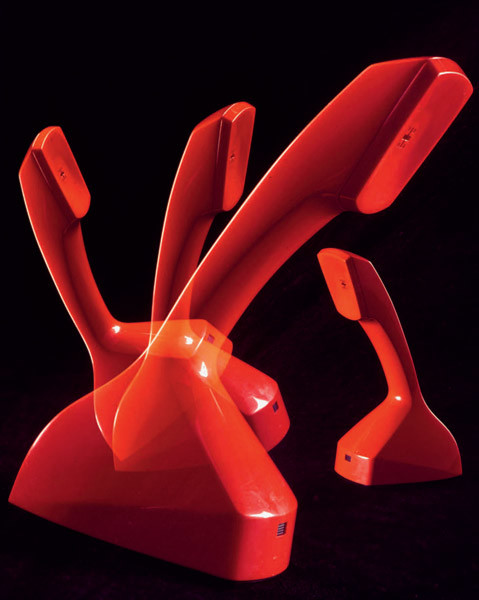 Who and when invented the service «sex byphone», is unknown. In antique shops you can find advertising postcards from the beginning of the century, on which a young man on one end of the line asks a playful girl on the other to "tickle" him. Today, phone sex brings in about $4.5 billion a year to the owners of this business. In the 1980s, most American telephone companies were actively working in this market, taking up to 45% of the cost of the call for themselves. However, over the past twenty-five years, puritanical morals in America have become stricter, so most operators have abandoned such a tasty business.
Who and when invented the service «sex byphone», is unknown. In antique shops you can find advertising postcards from the beginning of the century, on which a young man on one end of the line asks a playful girl on the other to "tickle" him. Today, phone sex brings in about $4.5 billion a year to the owners of this business. In the 1980s, most American telephone companies were actively working in this market, taking up to 45% of the cost of the call for themselves. However, over the past twenty-five years, puritanical morals in America have become stricter, so most operators have abandoned such a tasty business.
Death tube
 Good news!Cell phone radiation cannot cause brain cancer: the signal is too weak to cause changes in tissue. But on an airplane, it is better to listen to the crew's request and turn off your mobile phone. The mobile signal can disrupt the operation of the equipment installed on board. For the same reason, they prohibit the use of phones in cardiology and surgical departments of hospitals. People with a pacemaker are not recommended to use mobile phones - the call interrupts the electrical impulses that the device sends to the patient's heart.
Good news!Cell phone radiation cannot cause brain cancer: the signal is too weak to cause changes in tissue. But on an airplane, it is better to listen to the crew's request and turn off your mobile phone. The mobile signal can disrupt the operation of the equipment installed on board. For the same reason, they prohibit the use of phones in cardiology and surgical departments of hospitals. People with a pacemaker are not recommended to use mobile phones - the call interrupts the electrical impulses that the device sends to the patient's heart.
The phone is not for everyone

 Nowadays, the telephone is not onlya means of communication, but also an iconic accessory, the price of which can reach a million euros. However, when choosing a luxury mobile phone, the buyer pays not so much for the wonders of technical thought, but for a case hand-carved from valuable wood and studded with precious stones. Thus, the Vertu mobile phone from Nokia has long been an indispensable attribute of social status, like real estate on the Cote d'Azur and a collection of impressionists. Not long ago, Vertu, together with the jewelry house Boucheron, released a new product - eight diamond- and ruby-decorated Signature Cobra series phones at a price of $310,000 each. The Swiss company Goldvish, which has long dreamed of pushing Vertu out of the market, released a series of phones decorated with platinum, gold and diamonds, the cost of which ranges from $20,000 to a million euros. The Canadian company Mobiada puts Nokia "stuffing" into cases made of Honduran rosewood.
Nowadays, the telephone is not onlya means of communication, but also an iconic accessory, the price of which can reach a million euros. However, when choosing a luxury mobile phone, the buyer pays not so much for the wonders of technical thought, but for a case hand-carved from valuable wood and studded with precious stones. Thus, the Vertu mobile phone from Nokia has long been an indispensable attribute of social status, like real estate on the Cote d'Azur and a collection of impressionists. Not long ago, Vertu, together with the jewelry house Boucheron, released a new product - eight diamond- and ruby-decorated Signature Cobra series phones at a price of $310,000 each. The Swiss company Goldvish, which has long dreamed of pushing Vertu out of the market, released a series of phones decorated with platinum, gold and diamonds, the cost of which ranges from $20,000 to a million euros. The Canadian company Mobiada puts Nokia "stuffing" into cases made of Honduran rosewood.
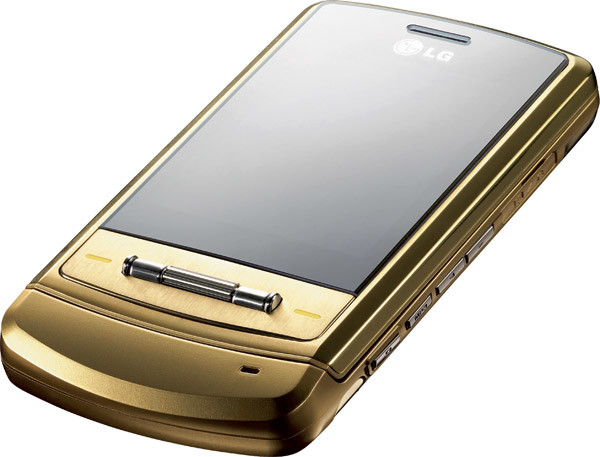
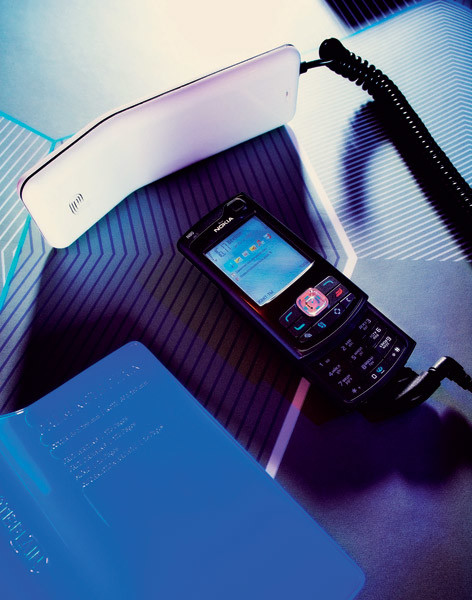
 However, one of the high-ranking managersT-Mobile recently revealed a terrible secret: super-expensive models, as a rule, sell poorly and do not bring profit to the companies! They, like high fashion collections, only heat up the consumer's interest in the brand. Real money is brought in by more affordable, although not decorated with diamonds new products - LG phones from Prada, Samsung from Armani and gold Motorola from D&G. Experts predict a great commercial future for the works of famous designers - a soft-touch device from Timo Wong, futuristic fantasies of Marc Newson, flexible Nokia 888 from Tamera Nakiski... Even stars have been noted as phone designers: the manufacturer of pocket computers Palm commissioned the design of the phone from top model Claudia Schiffer. However, the device was not a commercial success: it turned out that consumers are not ready to overpay for an extra rhinestone on the case.
However, one of the high-ranking managersT-Mobile recently revealed a terrible secret: super-expensive models, as a rule, sell poorly and do not bring profit to the companies! They, like high fashion collections, only heat up the consumer's interest in the brand. Real money is brought in by more affordable, although not decorated with diamonds new products - LG phones from Prada, Samsung from Armani and gold Motorola from D&G. Experts predict a great commercial future for the works of famous designers - a soft-touch device from Timo Wong, futuristic fantasies of Marc Newson, flexible Nokia 888 from Tamera Nakiski... Even stars have been noted as phone designers: the manufacturer of pocket computers Palm commissioned the design of the phone from top model Claudia Schiffer. However, the device was not a commercial success: it turned out that consumers are not ready to overpay for an extra rhinestone on the case.
Eh, apple!
 A separate topic — developed by the companyApple iPhone communicator, which Russian users instantly renamed as «applephone». Its appearance literally drove American fans of advanced gadgets crazy, who began to besiege stores a week before the start of official sales. People spent the night in tents, sat on folding chairs all day. The most enterprising traded places in line for $1,200 (with the cost of the device itself being $600). Only the singer Madonna was lucky, who was the first to receive the communicator as a gift. The apotheosis of mass insanity was the sale of an empty cardboard package from under the iPhone on the Internet auction eBay, which «went» for $305. However, after the first wave of excitement died down, and users studied the new product, it became clear that the rumors about the coolness of the iPhone were somewhat exaggerated. It turned out that it was almost impossible to install other programs on it, you couldn't use any keyboard except the touchscreen one (so typing SMS and sending emails wasn't as easy as you'd like), and the device itself was strictly tied to a specific mobile operator. Hackers came to the aid of the consumer, and quickly made it so that SIM cards from different operators could be inserted into the communicator. Now the gadget can be bought without any queues for only $400
A separate topic — developed by the companyApple iPhone communicator, which Russian users instantly renamed as «applephone». Its appearance literally drove American fans of advanced gadgets crazy, who began to besiege stores a week before the start of official sales. People spent the night in tents, sat on folding chairs all day. The most enterprising traded places in line for $1,200 (with the cost of the device itself being $600). Only the singer Madonna was lucky, who was the first to receive the communicator as a gift. The apotheosis of mass insanity was the sale of an empty cardboard package from under the iPhone on the Internet auction eBay, which «went» for $305. However, after the first wave of excitement died down, and users studied the new product, it became clear that the rumors about the coolness of the iPhone were somewhat exaggerated. It turned out that it was almost impossible to install other programs on it, you couldn't use any keyboard except the touchscreen one (so typing SMS and sending emails wasn't as easy as you'd like), and the device itself was strictly tied to a specific mobile operator. Hackers came to the aid of the consumer, and quickly made it so that SIM cards from different operators could be inserted into the communicator. Now the gadget can be bought without any queues for only $400






